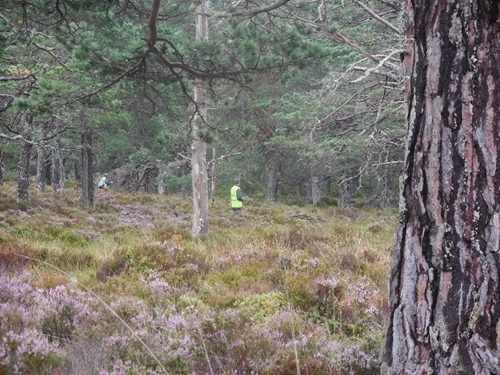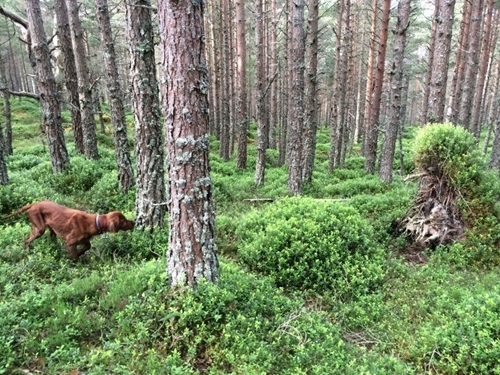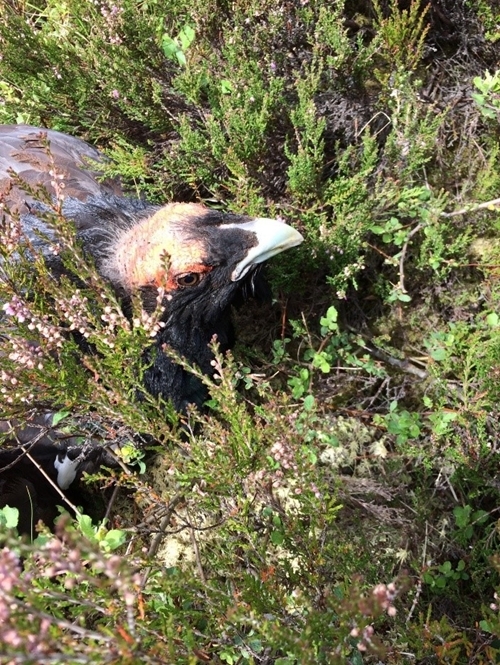In August, as red grouse counts end, GWCT staff and their pointing dogs head into the pine forests to measure capercaillie breeding success. Capercaillie have severely declined in numbers and range since the 1970’s, with 83% of the UK population now thought to be in Badenoch and Strathspey in the Scottish Highlands. Low productivity is the principal cause of the decline, so measuring annual breeding success is an indicator of population health.

The dogs find the birds by scent, but as visibility is poor in forests so we wear Hi-Vis vests and the dogs wear collars with falconry bells attached.

Even in good years half the females rear no young and we do not know whether their eggs may have been eaten by pine martens, which are increasing in the forests, or their chicks may have succumbed to biting sheep ticks, which even render adults bald (see photo below).

Management to reduce generalist predators such as crows and foxes is undertaken in some privately-owned forests to help capercaillie, but in most forests rewilding now prevails and habitat expansion is the priority. Much work has been done to date to improve habitat, increase connectivity and mark fences to reduce the risk of fence strikes. However, tackling the impact of predators and parasites such as sheep ticks, as opposed to merely habitat improvement and expansion, creates a dichotomy of opinion amongst ecologists and land managers within this last stronghold of this species. Meanwhile, a second extinction of capercaillie, (the first occurred in the 18th century), looks increasingly likely.